

The 2nd Chutai's Hangar.
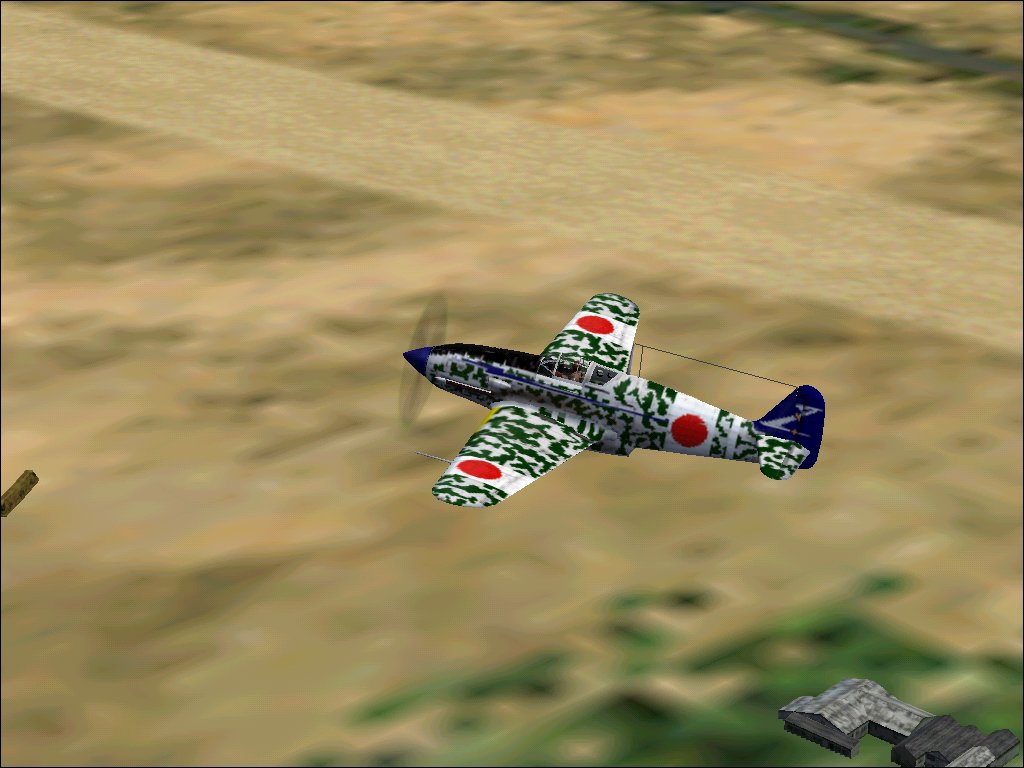
But in paccom games this is not used so do not install the RX file or if you have it delete it.
|
Aircraft name
|
Photo
|
Download
|
|
KI-27b(Nate)
|
 |
|
|
KI-43(Hayabusa)
|
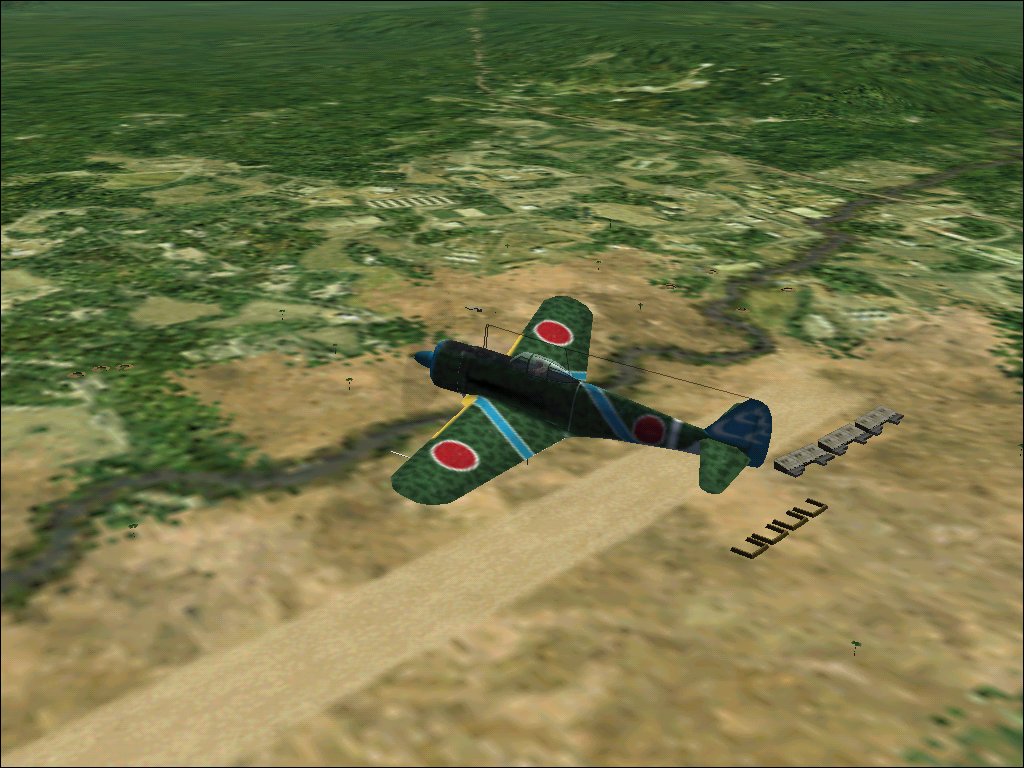 |
|
|
KI-44
|
 |
|
|
KI-51
|
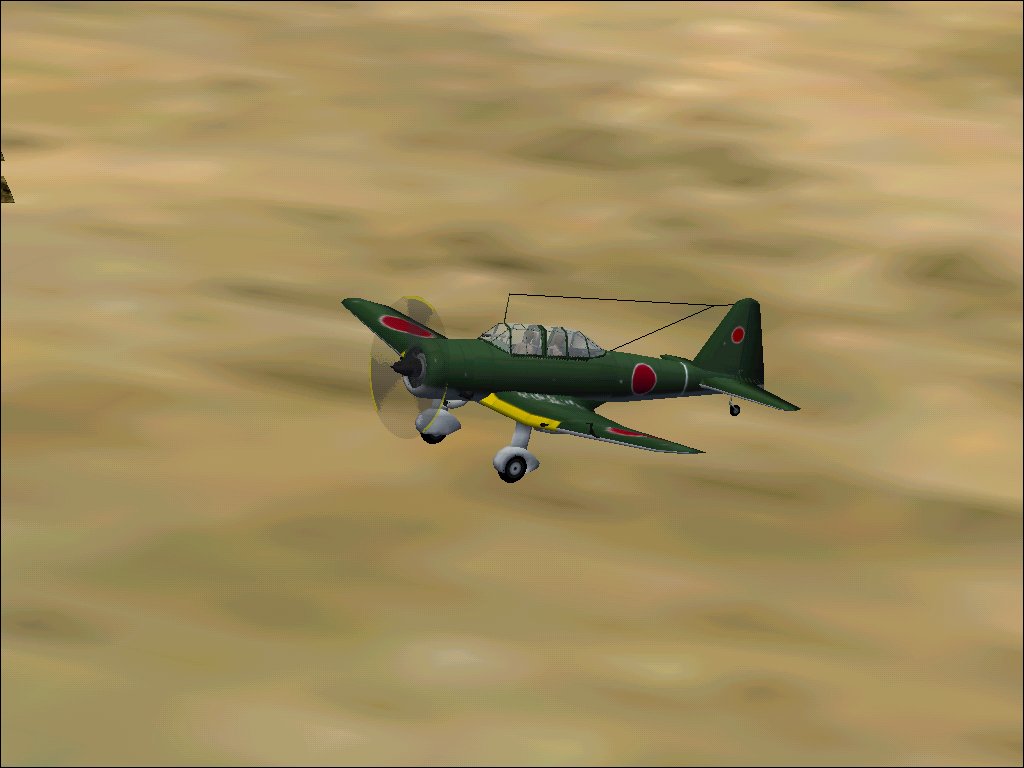 |
|
|
KI-61
|
 |
|
|
KI-84
|
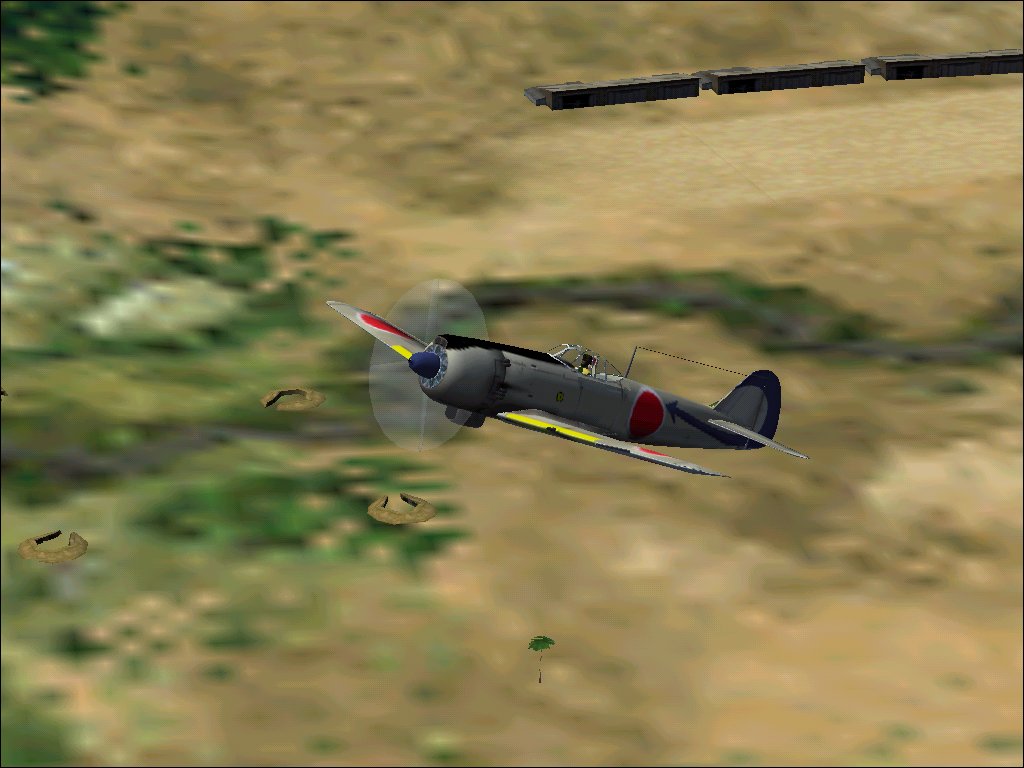 |
|
|
Am6m2-21(Zero)
|
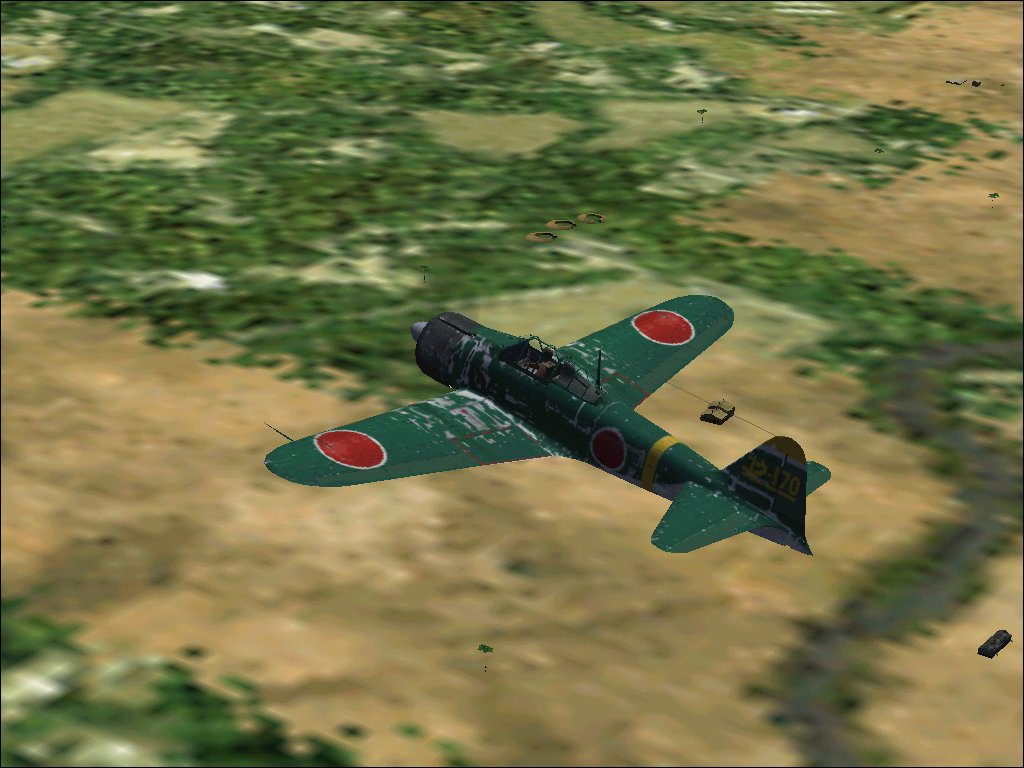 |
|
|
G4M2(Betty)
|
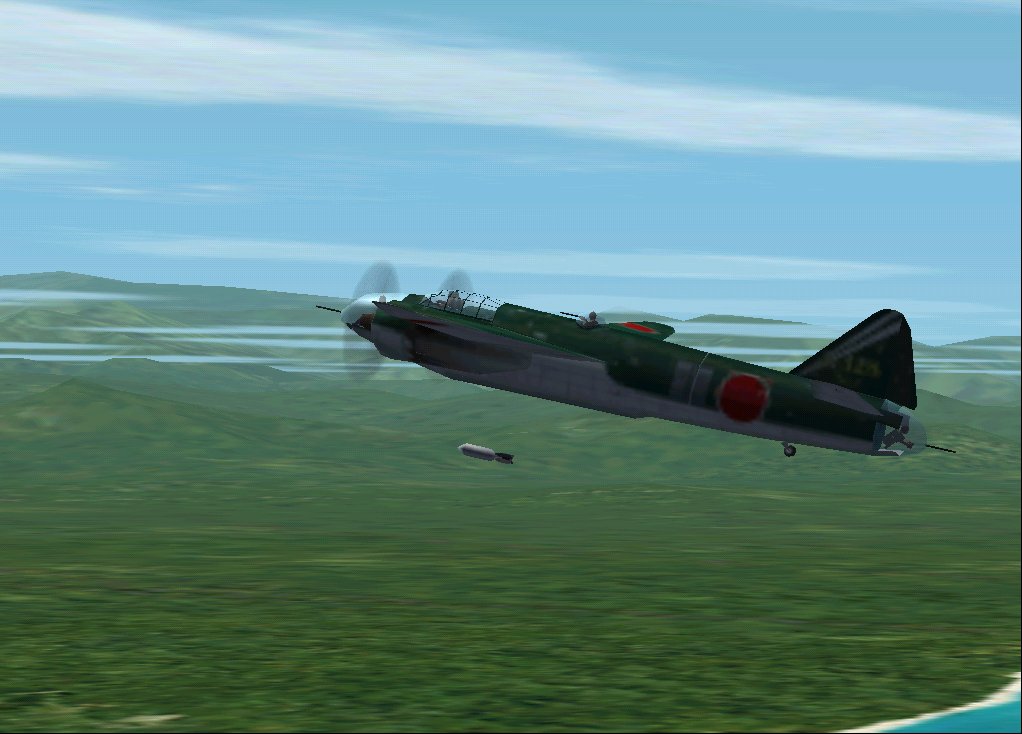 |
|
Ki.43-II-b Hayabusa 'Oscar' 1st Chutai, 50th Sentai IJAAF. Primary fighter/bomber
of the 2nd Chutai.
Specifications
Nakajima Ki-27a "Nate"

Nakajima Ki.27 'Nate'
Specifications Nakajima Ki-27a "Nate"
Type: Single Seat Fighter
Powerplant: One 710 hp (529 kw) Nakajima Ha-1b 9-cylinder radial piston engine.
Performance: Maximum speed 292 mph (470 km/h) at 11,485 ft (3500 m); cruising
speed 217 mph (350 km/h).
Range: 389 miles (625 km) on internal fuel stores.
Weight: Empty 2,447 lbs (1110 kg) with a maximum take-off weight of 3,946
lbs (1790 kg).
Dimensions: Span 37 ft 1 1/2 in (11.31 m); length 24 ft 8 1/2 in (7.53 m);
height 10 ft 8 in (3.25 m); wing area 199.68 sq ft (18.55 sq m).
Armament: Two forward firing 7.7 mm (0.303 in) machine guns.
Variants: Ki-27, Ki-27a, Ki-27b, Ki-27 KA1 (experimental).
Operators: Japanese Army, Thailand.
Type: Single Seat Fighter & Fighter Bomber
Powerplant: One 1,150 hp (858 kw) Nakajima Ha-115 14-cylinder radial piston engine.
Performance: Maximum speed 329 mph (530 km/h) at 13,125 ft (400 m); cruising speed 273 mph (440 km/h); service ceiling 36,745 ft (11200 m).
Range: 1,988 miles (3200 km) with external fuel stores.
Weight: Empty 4,211 lbs (1910 kg) with a maximum take-off weight of 5,710 lbs (2590 kg).
Dimensions: Span 35 ft 6 3/4 in (10.84 m); length 29 ft 3 1/4 in (8.92 m); height 10 ft 8 3/4 in (3.27 m); wing area 230.36 sq ft (21.40 sq
Armament: Two 12.7 mm (0.50 in) forward firing machine guns, plus two bombs up to 551 lbs (250 kg) in weight on underwing racks.
Variants: Ki-43 (prototype), Ki-43-1a (Army type I Fighter Model 1A Hayabusa production aircraft) , Ki-43-1b, Ki-43-1c, Ki-43-II (five prototypes for evaluation), Ki-43-11a (production aircraft), Ki-43-11b, Ki-43-11 KAI, Ki-43-111a (prototype with a more powerful engine), Ki-43-111b (proposed interceptor with only cannon but it never entered service).
Operators: Japanese Army, Thailand.
Kawasaki Ki-61-I Hien "Tony"
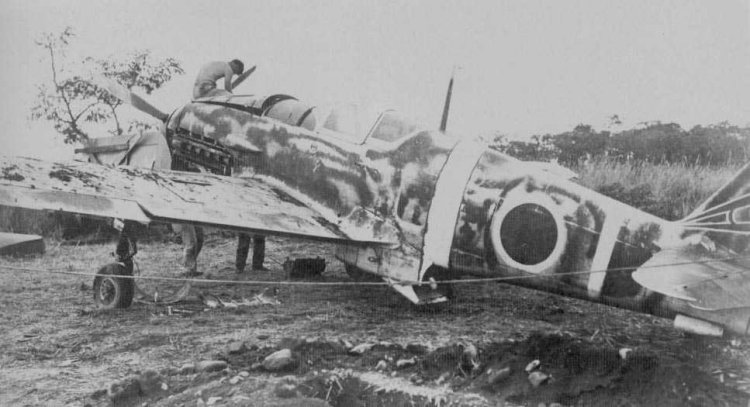
Ki.61-1 b Hien 'Tony' ; 2nd Chutai markings, note: arrow tail.
Specifications Kawasaki Ki-61-Ic Hien "Tony"
Type: Single Seat Fighter Interceptor
Powerplant: One 1,175
hp (876 kw) Kawasaki Ha-40 12-cylinder inverted V- engine.
Performance:
Maximum speed 348 mph (560 km/h) at 16,405 ft (5000 m); service ceiling 32,810
ft (10000 m).
Range: 1,181 miles (1900 km) with internal fuel
stores.
Weight: Empty 5,798 lbs (2630 kg) with a maximum take-off weight of
7,650 lbs (3470 kg).
Dimensions: Span 39 ft 4 1/4 in (12.00 m); length 29 ft
4 1/4 in (8.95 m); height 12 ft 1 3/4 in (3.70 m); wing area 215.59 sq ft (20.00
sq m).
Armament: Two fuselage mounted 12.7 mm (0.50 in) machine guns and two
wing mounted 20 mm Ho-5 cannon of Japanese design and manufacture. All versions
had provisions for underwing drop tanks, but Ki-61-Ic and all Ki-64-II's could
carry two 551 lbs (250 kg) bombs in place of the drop tanks.
Variants: Ki-61
(12 initial prototypes), Ki-61-I (Army Type 3 Fighter Model 1), Ki-61-Ia (wing
mounted cannon instead of machine guns), Ki-61-Ib (four 12.7 mm (0.50 in)
machine guns), Ki-61-Ic, Ki-61-Id (two 30 mm cannon instead of the two 20 mm
cannon), Ki-61-II (eight prototypes), Ki-61-II KAI, Ki-61-IIa, Ki-61-IIb (four
20 mm Ho-5 cannon), Ki-61-III (proposed prototype but the destruction of the
Akashi engine factory ended any further progress).
Operators: Japanese
Army.
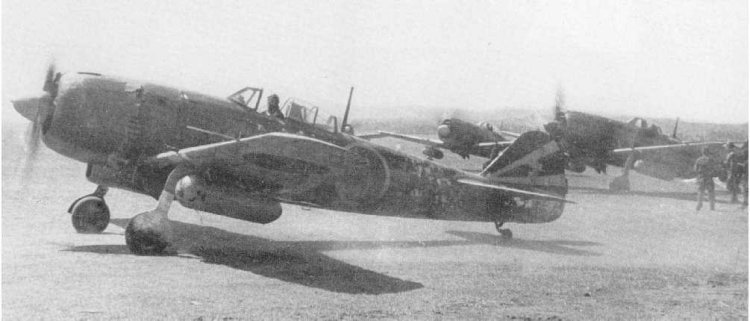
Nakajima Ki.84-1A Hayate Gale 'Frank'; 2nd Chutai markings.Note: arrow on the tail
Specifications Nakajima Ki-84-Ia Hayate "Frank"
Type: Single Seat Fighter Interceptor / Fighter
Bomber
Powerplant: One 1,900 hp (1416 kw) Nakajima Ha-45 18-cylinder radial
piston engine.
Performance: Maximum speed 392 mph (631 km/h) at 20,080 ft
(6120 m); cruising speed 277 mph (400 km/h); service ceiling 34,350 ft (10500
m).
Range: 1,347 miles (2168 km) with internal fuel stores.
Weight: Empty
5,864 lbs (2660 kg) with a maximum take-off weight of 8,576 lbs (8390
kg).
Dimensions: Span 36 ft 10 1/2 in (11.24 m); length 32 ft 6 1/2 in (9.92
m); height 11 ft 1 1/2 in (3.39 m); wing area 226.05 sq ft (21.00 sq
m).
Armament: Two fuselage mounted 12.7 mm (0.50 in) Type 1 machine guns and
two wing mounted 20 mm Ho-5 cannon, plus two 551 lbs (250 kg) bombs or two 44
Imperial gallon (200 litre) drop tanks on external racks.
Variants: Ki-84
(prototype), Ki-84-Ia (production model designated Army Type 4 Fighter Model Ia
Hayate), Ki-84-Ib (four 20 mm cannon), Ki-84-Ic (two 20 mm and two 30 mm
cannon), Ki-84-II (wooden wing tips and rear fuselage), Ki-106 (all wooden
construction prototype), Ki-113 (steel construction), Ki-116 (single example
using a lighter and less powerful 1,500 hp (1119 kw) Mitsubishi Ha-33 radial
engine).
Operators: Japanese Army.
Interceptors.
Nakajima Ki-44-IIb Shoki "Tojo"
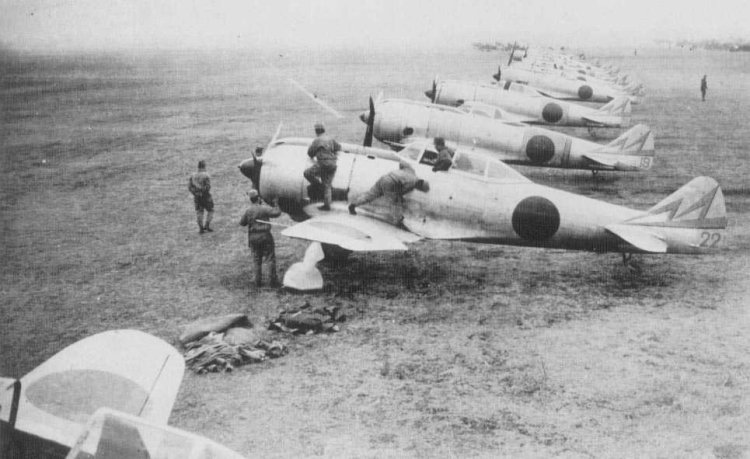
Ki.44-2 Shoki 'Tojo' flightline.
Specifications Nakajima Ki-44-IIb Shoki "Tojo"
Type: Single Seat Fighter Interceptor
Powerplant: One 1,520 hp
(1133 kw) Nakajima Ha-109 14-cylinder radial piston engine.
Performance:
Maximum speed 376 mph (605 km/h) at 17,060 ft (5200 m); cruising speed 249 mph
(400 km/h); service ceiling 36,745 ft (11200 m).
Range: 1,056 miles (1700 km)
with internal fuel stores.
Weight: Empty 4,641 lbs (2105 kg) with a maximum
take-off weight of 6,598 lbs (2993 kg).
Dimensions: Span 31 ft 0 in (9.45 m);
length 28 ft 10 in (8.79 m); height 10 ft 8 in (3.25 m); wing area 161.46 sq ft
(15.00 sq m).
Armament: Four 12.7 mm (0.50 in) machine guns, two in the
fuselage and two wing mounted.
Variants: Ki-44 (prototype SN 4401-4403),
Ki-44-I(a) Army Type 2, Ki-44-Ib, Ki-44-Ic, Ki-44-IIa (Nakajima Ha-109 Army Type
2 radial engine rated at 1,450 hp), Ki-44-IIb, Ki-44-IIc, Ki-44-IIIa, Ki-44-IIIb
(Two 20 mm Ho-5 cannons and two 37 mm Ho-203 cannon).
Operators: Japanese
Army.
Nakajima Ki.44 Shoki 'Tojo'
Ground Attack / Tactical Assault / Reconnaisance
Mitsubishi Ki.51 'Sonia'
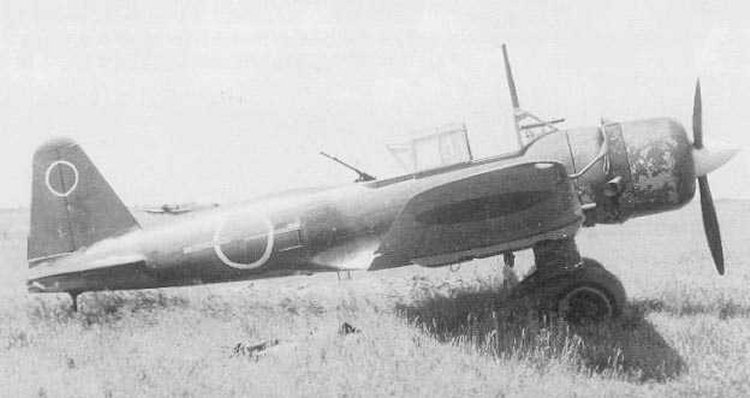
Mitsubishi Ki.51 'Sonia'
Specifications Mitsubishi Ki-51 - Army Type 99 Assault Plane
Type: Two Seat Ground Attack & Reconnaissance
Allied
Codename: Sonia
Design: Mitsubishi Jukogyo KK Design Team (Kawano, Ohki and
Mizuno, who had designed the Ki-30)
Manufacturer: Mitsubishi Jukogyo KK
(1,472) & Tachikawa Dai-Ichi Rikugun Kokusho (1st Army Air Arsenal -
913)
Powerplant: One 1,500 hp (1119 kW) Mitsubishi Ha-26-II radial
engine.
Performance: Maximum speed 264 mph (425 km/h) at 9,845 ft (3000 m);
service ceiling 27,130 ft (8270 m).
Range: 659 miles (1060 km) on internal
fuel.
Weight: Empty 4,129 lbs (1875 kg) with a maximum take-off weight of
6,437 lbs (2920 kg).
Dimensions: Span 39 ft 8 1/4 in (12.10 m); length 30 ft
2 1/4 in (9.20 m); height 8 ft 11 1/2 in (2.73 m); wing area 258.56 sq ft (24.02
sq m).
Armament: Two fixed forward firing 7.7 mm (0.303 in) Type 97 machine
guns, one 7.7 mm (0.303 in) Type 92 machine gun on a trainable mount in rear
cockpit plus a bombload of up to 441 lbs (200 kg). On late model aircraft the
two fixed 7.7 mm guns were replaced by 12.7 mm (0.50 in) machine
guns.
Variants: Ki-51a (single prototype), Ki-71.
Avionics:
None.
History: First flight summer 1939; first flight (Ki-71) 1941;
production ended with Japan's surrender.
Operators: Japan (Imperial Japanese
Army).